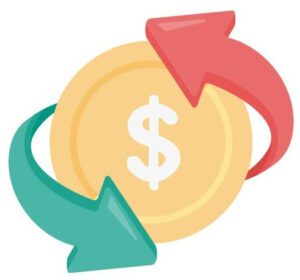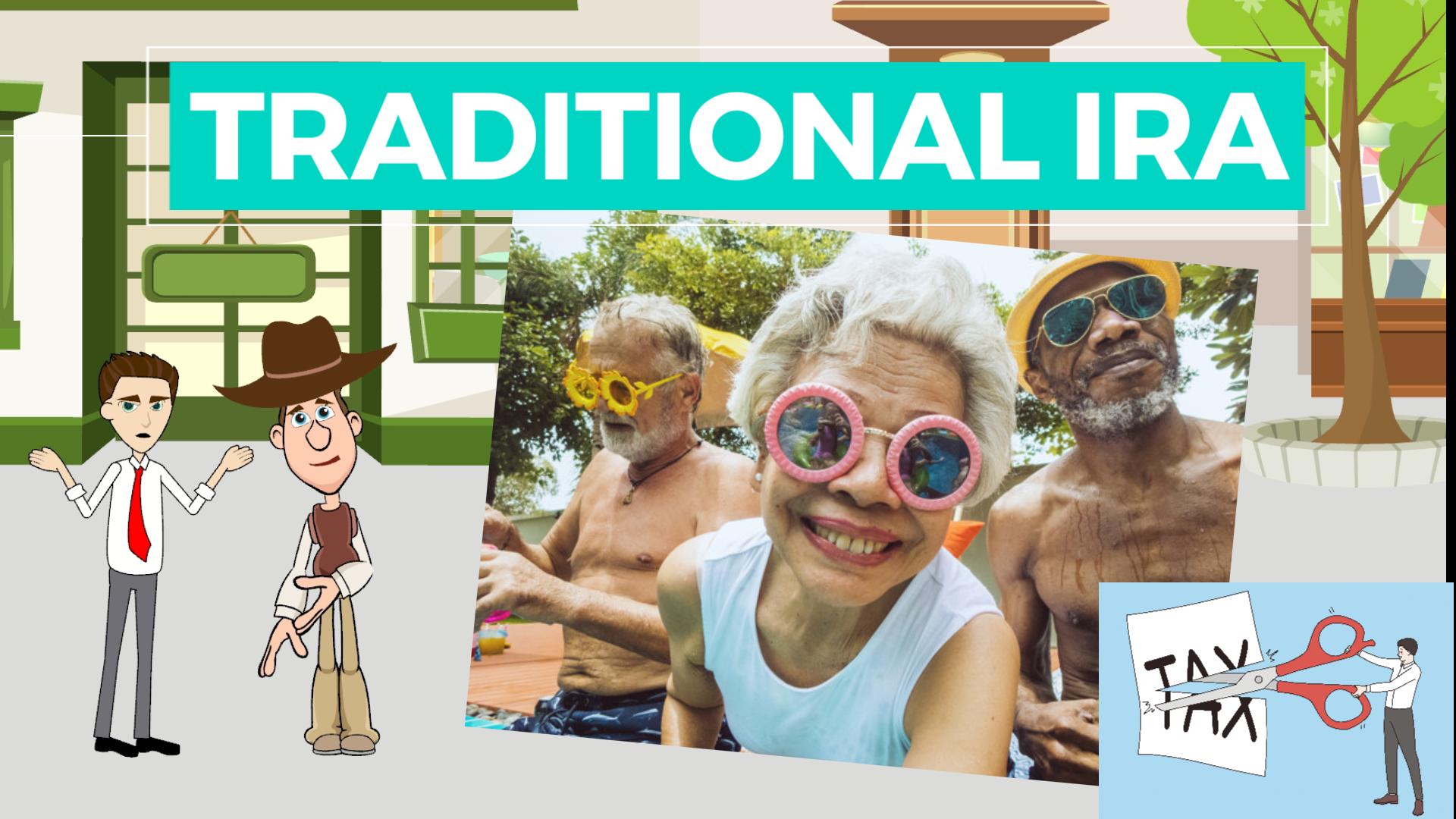Part 1: What is a Traditional IRA, How Does it Work, Can Kids Have an IRA, What is a ROTH Conversion
Part 2: Advantages of a Traditional IRA, Who Should Invest in an IRA
Part 3: Restrictions on Contributions to a Traditional IRA, Other Disadvantages of an IRA
Introduction to a Traditional IRA for Kids and Teens
This video explains the concept of a traditional IRA in a simple, concise way for kids and beginners. It could be used by kids & teens to learn about the pros and cons of traditional IRAs, or used as a money & personal finance resource by parents and teachers as part of a Financial Literacy course or K-12 curriculum.

Suitable for students from grade levels:
- Kindergarten
- Elementary School
- Middle School
- High School
The topics covered are:
- What is an IRA
- How does a Traditional IRA work
- Can kids have an IRA
- What is Roth conversion
- What are the advantages of investing in a traditional IRA
- Are there any restrictions on IRA contributions
- Are there any restrictions on IRA withdrawals
- Does a traditional IRA have any other disadvantages
- Is a traditional IRA right for me
What is an IRA?
An IRA, also called Traditional IRA, is a type of tax-advantaged retirement account that you typically fund with pre-tax money.

This allows you to deduct contributions from your income, lowering your income tax for that year.
The earnings grow tax deferred, but you have to pay tax on the money you withdraw in retirement.
IRAs are a popular option, as anybody can contribute as long as they have earned income – although the amount you can deduct depends on whether you or your spouse have a workplace retirement account like a 401k.
You can also make nondeductible contributions to your IRA, but there is no tax advantage – either at the time of contribution or withdrawal.
How does a Traditional IRA work?
With an IRA, you contribute pre-tax earned income, which includes salary, wages, bonus, tips, profit from business, etc. Rent, social security benefits, investment income, alimony, unemployment benefits, etc. don’t qualify as earned income.
The money can then grow in your IRA over time, and you only have to pay income tax when you withdraw the money in retirement.
Simply opening your traditional IRA will not make your money grow. After you open and fund the account, you need to choose the securities you want to invest in.
The investment options could be stocks, bonds, CDs, mutual funds, index funds, exchange traded funds (ETFs), etc.
An IRA can be opened at a bank, credit union or a brokerage that offers IRAs. But brokerages are the more popular choice as they offer a variety of investment options.
Can kids have an IRA?
If your child has earned income, you can open a Custodial IRA for them. Once they turn 18 or 21, they will assume ownership of the account.
This can really help them take advantage of compounding due to the long time horizon.
However, a Roth IRA may offer better tax benefits since they are more likely to be in a higher tax bracket in retirement which is ideal for the tax-free withdrawals of a Roth IRA.
I’ve heard about Roth conversion. What is that?

Roth conversion is a way to convert a traditional IRA into a Roth IRA, by paying taxes on the amount converted.
If you are converting a large sum, the tax liability that year can be significant. To avoid this, the conversion can be done over many years.
A Roth IRA conversion is ideal if you expect to be in a higher tax bracket in retirement, or want the flexibility to not make mandatory withdrawals (RMDs), or leave tax-free inheritance to your heirs.
What are the advantages of investing in a traditional IRA?
The biggest benefit of a traditional IRA is its tax advantaged nature. Unlike a regular brokerage account, where you contribute post-tax money and have to pay taxes on earnings, for an IRA, you only have to pay taxes when you withdraw money in retirement.
And in most cases, you can deduct contributions to reduce your taxes.
There are also no age restrictions on contributions as long as you have earned income in that tax year.
You have flexibility in timing your contributions – you can contribute your full limit in a single day or spread it over the year. You also get extra time to contribute – until the tax filing deadline, which is usually April 15th of the following year.
Also, no matter your income, you can contribute to an IRA.
You can deduct up to the full deduction limit as long as you or your spouse don’t have a workplace retirement account like a 401k. If you do, you can still contribute to an IRA, but the amount you can deduct may be reduced based on your income.
There are a variety of investment options – like stocks, bonds, certificate of deposit (CD), MFs, ETFs etc. – to choose from based on your investment goals and risk tolerance.
While there is a 10% early withdrawal penalty for withdrawals before age 59 1/2, you can withdraw penalty-free for certain exceptions. This makes an IRA a great option for unexpected medical emergencies, paying for college education, and buying your first home.
Are there any restrictions on contributions to an IRA?
Yes. Firstly, there is an annual limit on how much of your IRA contribution you can deduct. For 2023, the limit is $6,500, but people over 50 can deduct an extra $1,000 per year.
The money you contribute also has to be earned income.
If your earned income is less than the deduction limit, you can only deduct up to the amount of earned income that year. Also, the contributions for a tax year must be made before the tax filing deadline, which is usually April 15 of the following year.
Also, no matter your income, you can contribute to an IRA. However, if you or your spouse has a workplace retirement account like a 401k, the amount you can deduct from your income may be reduced based on your income.
Are there any restrictions on withdrawals from an IRA?

If you withdraw from an IRA before age 59 1/2, you will not only have to pay income tax on the withdrawal, but you’ll also incur a 10% early withdrawal penalty.
Also, you need to take Required Minimum Distributions (RMDs) after you turn 73.
RMDs are the minimum amount of money you have to take out of the IRA and pay taxes on every year. This amount is calculated based on the IRA balance.
Does a traditional IRA have any other disadvantages?
The contribution limits are much lower than a 401k.
Also, since you pay taxes on withdrawals in retirement, you may be better off using a Roth IRA if you expect to be in a higher tax bracket in retirement.
So should everyone have an IRA? Is a traditional IRA right for me?
Investing in an IRA is a great choice if you plan to use the money only in retirement, will likely be in a lower tax bracket in retirement, or you and your spouse don’t have access to employer sponsored retirement plans.
But make sure to consider all possible retirement accounts based on your needs – like a 401k, which is another great retirement account.
Download Transcript: Ideal for Use by Teachers in their Lesson Plan to Teach Kids & Teens
Part 1: What is a Traditional IRA, How Does it Work, Can Kids Have an IRA, What is a ROTH Conversion
Part 2: Advantages of a Traditional IRA, Who Should Invest in an IRA
Part 3: Restrictions on Contributions to a Traditional IRA, Other Disadvantages of an IRA

